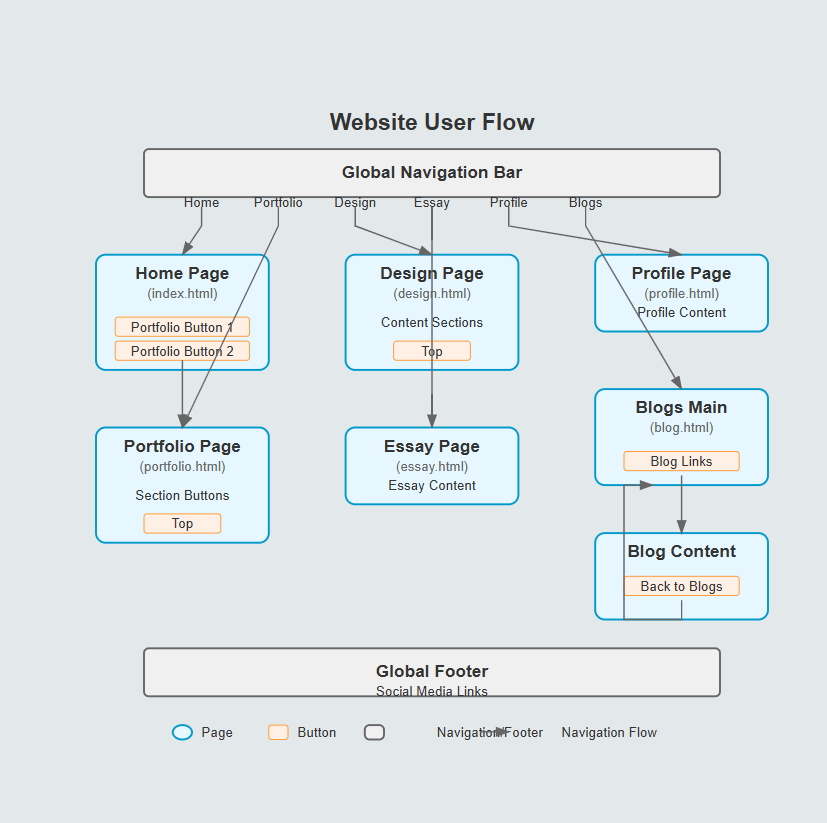DESIGN OVERVIEW
Aesthetic Statement: My goal is to create a balanced, modern digital presence that is both functionally robust and visually compelling. The design seamlessly integrates technical excellence with a clear user experience, guided by continuous user feedback and design refinement.
This section documents my Interaction Design (IxD) process, aesthetic decisions, and accessibility considerations. Every design choice is made with usability, clarity, and effective communication in mind. The documentation includes initial ideation, reflections on iterative testing, and a final consolidation of style and structure.
Overall Website Goals
The primary objective of this portfolio is to present my work with both technical and creative excellence. In addition to showcasing projects, the website serves as a transparent narrative of my design journey.
- Demonstrate Technical Versatility: Rather than compartmentalizing my skills into rigid categories, I implemented a subtle tagging approach that highlights how different skills connect across projects, emphasizing my adaptability across different types of work.
- Communicate Design Thinking: I deliberately included process work alongside finished pieces, inviting viewers behind the scenes of my creative process.
- Create Meaningful Connections: Instead of a generic contact form, I tailored contact prompts to appear in relevant contexts throughout the site.
- Balance Professionalism with Personality: I developed a consistent voice that demonstrates competence while revealing genuine enthusiasm for my work.
- Prioritize Accessibility: I researched accessibility guidelines early in the process, incorporating them into my design decisions from the beginning.






.png)
